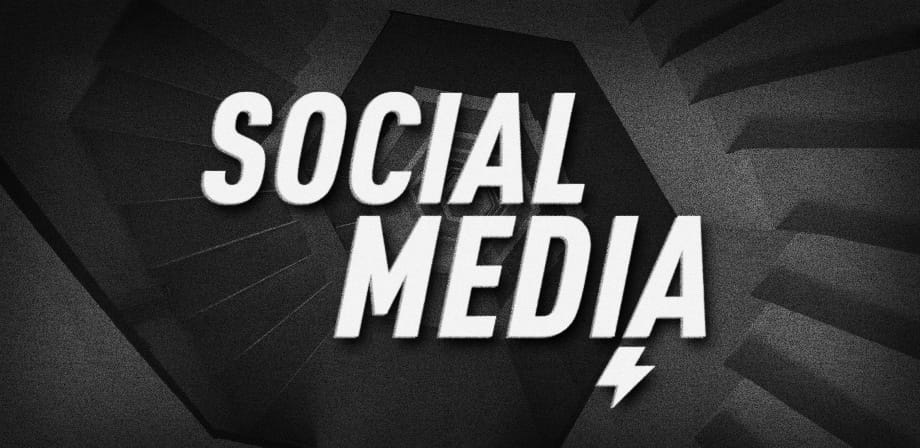Here’s a thought: Do you really need a website?
Yes, we realize where you’re reading this, so we’re exaggerating a little bit. After all, since the digital marketplace began, websites have been the driving force for everyone’s marketing strategy. Whether a customer found your brand through an ad or billboard, they needed to eventually visit your site. Otherwise, how would you know your efforts were successful? In entertainment terms, all other channels were the opening act. Your site and how it served your business was the star.
Well, times have changed.
We’re not suggesting you unplug your brand’s site and go live in the woods. But the hub-and-spoke ideal of planning a campaign with all roads leading to your website is fading fast. With so many social channels at your disposal, your brand can launch a successful campaign without relying on your website.
Obviously, any good show needs a headliner. But if you’re still seeing your brand’s site as the primary focus of your marketing, you’re missing a crucial part of your audience.

Websites cast too wide of a net to satisfy your audience
Control is among the biggest reasons why brands have viewed their digital properties as the destination for a campaign. Once your customer comes to your site, you’re free to funnel them along to whatever result you desire.
If a user wants to learn more about your brand’s latest release, they can buy it on this page. Or, if they’re curious about the history of a franchise, you can present a timeline tracing the narrative. From the grandmother shopping for Christmas presents to your brand’s longtime fans, your site needs to be all things to all people.
With so many audiences to serve, any brand will struggle to satisfy every user's needs. You can expand your site to incorporate community elements such as message boards and fan resources. But if your website primarily offers just an overview of your brand, users will go elsewhere to find what they need.
The user experience for consumers has grown far more ephemeral, especially among younger people. Your audience is browsing TikTok, refreshing Instagram, and checking in with Reddit forums for updates about product launches or other updates. Users engage with your brand in so many ways that you need to think differently about where your site fits in their journey.
Your brand no longer has control over what your audience considers their primary source of information. But if you’re active on the right channels, that’s not necessarily a bad thing.

How social media platforms outperform your brand’s website
Whatever customer your brand is trying to attract, they’re spending more time than ever on social media. If you’re trying to capture a younger audience, then they’re gravitating to those channels even faster.
In the U.S., 77% of users ages 15 to 25 use YouTube, and 70% of teenagers visit TikTok at least once a month. Snapchat has 557 million users worldwide, and 82% are under 35. Over a billion users log into Instagram each month, and more than half of them are under 35.
The popularity of social media is hardly breaking news. But it can no longer be considered a background player. With those kinds of habits, you can’t expect customers to type your brand’s name every time they want to learn about your next release. Your brand needs to meet users where they are. And once your brand has joined the conversation on social media, you can take advantage of the benefits users recognize.
Social media is the most current channel connected with your brand
Platforms like Facebook, Twitter, and Reddit once served the primary goal of connecting people. But social media is constantly updating, which offers users the experience of finding out about something new as it happens. Consequently, those channels are viewed by consumers as the most up-to-date means of connecting with a brand. Websites require more effort to update, which makes them now feel more static by comparison.
Instead of relying on a brand website for the latest news about their favorite products, people turn to social media. The rapid-response capabilities of social tools became essential during the pandemic, which changed by the day. Businesses kept their customers updated by distributing updates on Instagram or Twitter about sudden closures.
Given audiences already regularly use social channels, these businesses were effectively taking information directly to their audience. As long as your brand remains consistent with its social media presences, your fans will recognize those channels as a valuable resource.

Social platforms offer a broad promotional reach at a low cost
Along with providing the latest news from your brand, social media channels offer rich promotional possibilities for product launches. Once your brand establishes a presence, you gain a dedicated audience of consumers who are interested in what you have to offer.
Whatever your brand presents, your message reaches exactly the audience you need without paying millions of dollars to run an ad on TV. Instead of applying a “spray and pray” approach to promote your next launch, social media allows you to target the fans your campaign needs without the costs.
Even if you place the same information on your website, you’re competing with other voices in search results to ensure your message is found first. With social media tools, your brand can control the narrative far more easily. But you still need to ensure what your users find on your feed is worth their investment.

Social channels offer greater possibilities for engaging content
Once your audience subscribes to your brand’s channels, you have to offer something richer than promotional copy to be successful. Fortunately, social media provides an opportunity to deliver engaging content that stands out.
One gaming company used Twitter to promote an upcoming title with regular posts ostensibly written by the game’s characters. Not only did the campaign continue to promote the release date, it also offered fans exclusive hints of in-game action and updates.
Social media also provides brands with the opportunity to better establish or update their voice. A longtime late-night and breakfast favorite, Denny’s offers creative and often absurd commentary on current events with its Twitter feed. Wendy’s, Duolingo, and the San Diego Zoo apply social tools to deliver engaging and sometimes unexpected views of their brand. And fans are following.
Do each of those brands still have websites? Of course. But in terms of connecting with the right audience in a way that elevates their message, social media is taking them much further.


